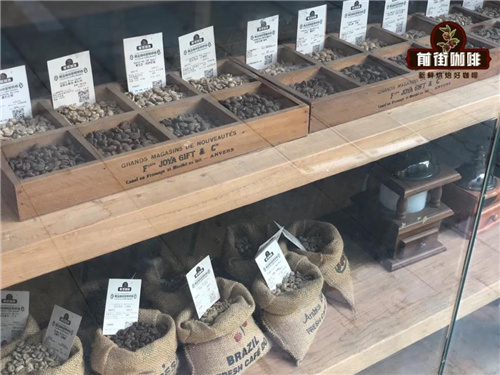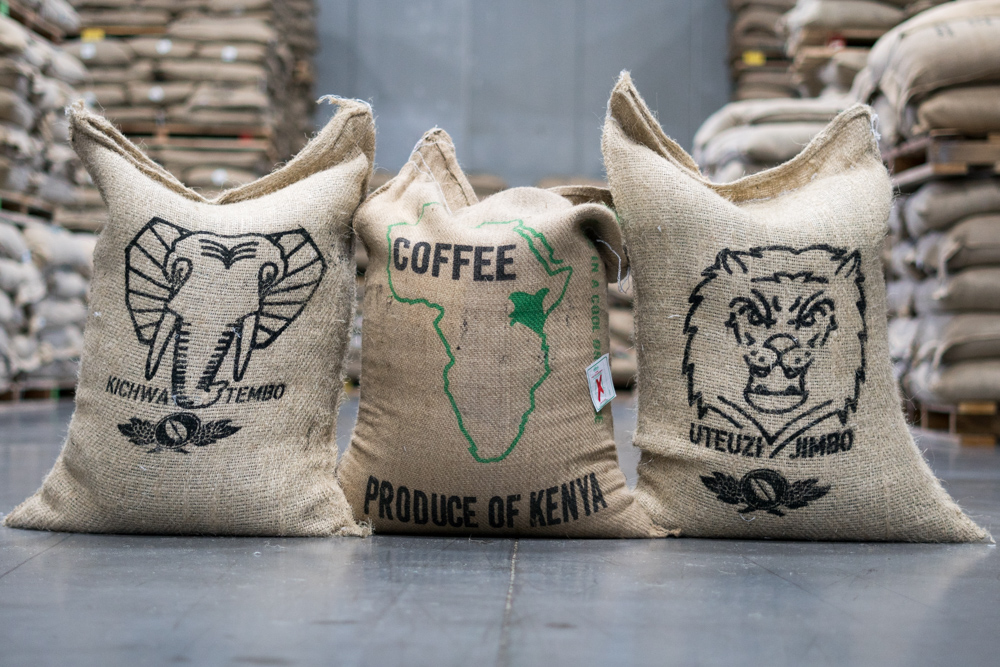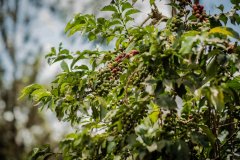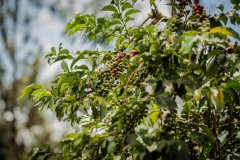Kenyan coffee bean grading standard| Kenya coffee packaging elephant logo and main growing areas
Kenya, like its neighbor Ethiopia, is a very important country for coffee production. It is located in the middle of the equator at low latitudes, with multiple plateaus and an average elevation of 1500 meters above sea level. Coffee is mainly grown in volcanic lands around 1600-2100 meters above sea level from the capital Narobi to the mountains of Kenya. This height is suitable for the development of the flavor of coffee beans, because the temperature in the mountain area is low, the growth rate of coffee is very slow, resulting in the full development of the aromatic substances of coffee, the acidity is very obvious, and the texture is relatively hard. So how is such excellent coffee graded?

So how exactly did he grade it? Let's prefetch it and have a look.
The common AA FAQ series refers to the quality of FAQ (fair average qulty, ordinary grade), while AA indicates that it accords with the size and density of AA series. AB+ (ABPlus) is AB size, but it has high cup quality and high flavor and acid quality can be included in this series. The grading of Kenyan coffee is carried out after shelling in the dry treatment plant. after the fruit is harvested, the fruit is treated in the first stage after harvest at the wet treatment station of small farmers' cooperatives. the shell beans are transported to the dry treatment plant for the follow-up operation of shelling and grading. After shelling the shell beans in the dry treatment field, the beans will be divided into the following 8 grades according to the size, appearance characteristics and density of the beans.
E: flat beans above 19 mesh, or elephant beans (Elephant bean).
AA: 17-18 mesh (7.2mm-8.2mm), flat beans (there are two beans in each fruit
AB: 16-17 mesh (6.2mm-6.8mm).
PB: round beans (4.7mm 6.6mm)-there are usually two beans in a fruit. The one with only one bean in one fruit is the round bean and is oval in shape.
C: 14 from below (4.0mm 6.3mm), because the size is too small to be included in the boutique grade. Although the number of eyes is large (15-18), but the density is low (beans are lighter): the list of people is in the boutique level (usually selected by An and AB Lions, light in density and not enough to be classified as AA and AB).
T: small particles (less than 14 mesh) and density and quality can not be included in the boutique. M: Mbuni (pronounced Mu Mi) belongs to the low-quality sun grade, which is usually raw beans, overripe beans or fruits left on the tree at the end of the season. This kind of fruit does not undergo Kenyan-style washing-fermentation operation, but is treated directly in the sun on the ground or on the scaffolding. External oil these sun-dried beans are of low quality and are usually available only for the Kenyan domestic market.

Important Notice :
前街咖啡 FrontStreet Coffee has moved to new addredd:
FrontStreet Coffee Address: 315,Donghua East Road,GuangZhou
Tel:020 38364473
- Prev

Kenya Coffee Bean Fruit acquisition and Refining processing Mode | description of SL28 and SL34 flavor and taste
African coffee has always been one of the best coffee producing areas in the world. Kenya, as a country that pays attention to coffee cultivation and quality management, needless to say the flavor of coffee beans. So what kind of management model makes it develop so rapidly? / I believe everyone is very curious about its coffee fruit acquisition and meticulous processing plan! First, the manor coffee farmers pick ripe fruits and send them one after another
- Next

Quality Standard and Flavor and taste characteristics of Kenyan Coffee Raw Bean Cup | main varieties of Kenyan Coffee
Kenyan raw beans are briefly introduced at http://bak.gafei.com/kafeidou/20210707142919.html. Today, the editor focuses on cooked beans, how he cup tests and what the criteria are. Basically, Kenyan coffee will be sent to the Kenya Coffee Bureau (coffee board of Kenya,CBK) established by the government.
Related
- Detailed explanation of Jadeite planting Land in Panamanian Jadeite Manor introduction to the grading system of Jadeite competitive bidding, Red bid, Green bid and Rose Summer
- Story of Coffee planting in Brenka region of Costa Rica Stonehenge Manor anaerobic heavy honey treatment of flavor mouth
- What's on the barrel of Blue Mountain Coffee beans?
- Can American coffee also pull flowers? How to use hot American style to pull out a good-looking pattern?
- Can you make a cold extract with coffee beans? What is the right proportion for cold-extracted coffee formula?
- Indonesian PWN Gold Mandrine Coffee Origin Features Flavor How to Chong? Mandolin coffee is American.
- A brief introduction to the flavor characteristics of Brazilian yellow bourbon coffee beans
- What is the effect of different water quality on the flavor of cold-extracted coffee? What kind of water is best for brewing coffee?
- Why do you think of Rose Summer whenever you mention Panamanian coffee?
- Introduction to the characteristics of authentic blue mountain coffee bean producing areas? What is the CIB Coffee Authority in Jamaica?

